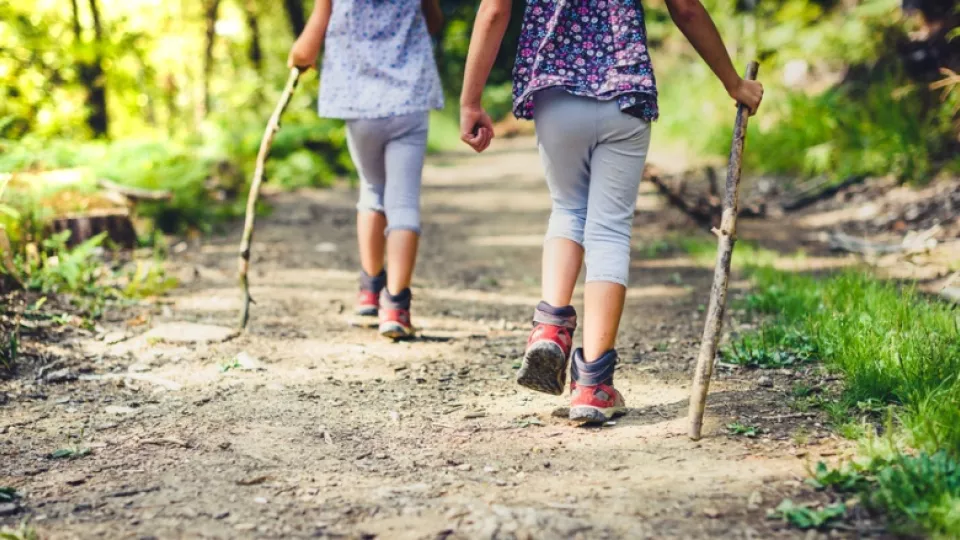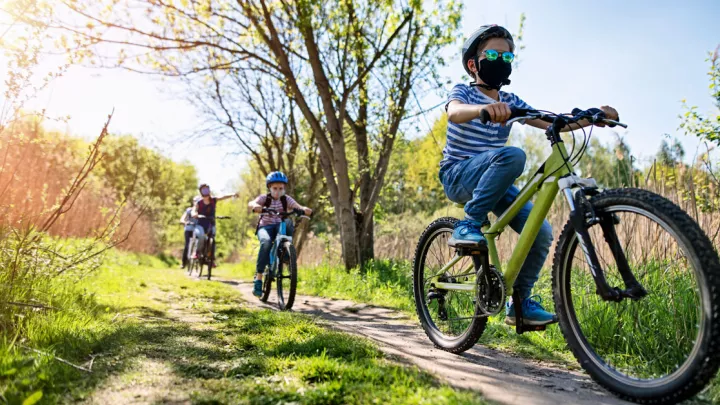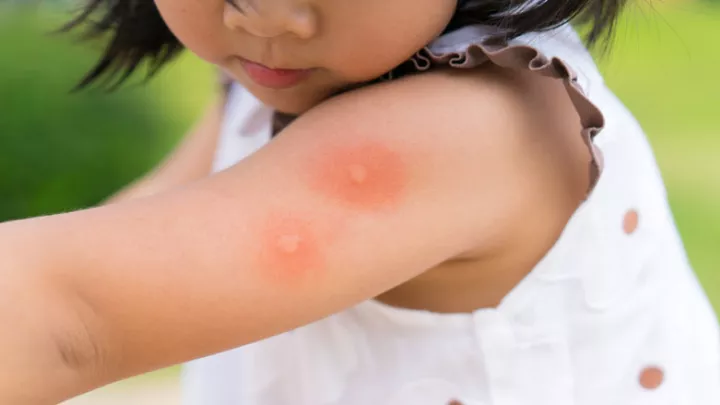
Hiking Safety for Kids: Expert Tips
As you’re enjoying the early fall weather and outdoor adventures, like hiking, don’t forget to make safety a priority to help keep illness and injuries from spoiling family fun time. Here we offer some tips on how to prevent bug bites, proper animal interaction and empowering kids to explore the outdoors in a safe and smart way.
Preventing Bug Bites
Mosquitos
Mosquitos are by far the most annoying insect you and your children may come into contact with when hiking. Mosquitos not only leave you with annoying itchy welts, they can also spread diseases. Although we do not see malaria, dengue fever or Zika here in California, we do have illnesses such as West Nile virus, which can make you pretty sick. The Centers for Disease Control and Prevention (CDC) states that one in five people who become infected with West Nile Virus may demonstrate symptoms that include fever, diarrhea, headaches, vomiting, and/or a rash. West Nile Virus is also known for causing its victims to sometimes experience weeks to months of persistent fatigue (weakness).
Prevent mosquito bites:
- Avoid spending extended periods of time in areas with still water.
- Wear an insect repellent that is approved the Environmental Protection Agency (EPA).
- Cover skin by wearing long-sleeved shirts, long pants and hats.
- Avoid hiking and outdoor activities at prime mosquito biting times, which are dawn and dusk. Mosquitoes like the same cooler weather conditions that we do.
Avoid applying insect repellent to children less than six months of age and keep it away from the hands and faces of older children, who may stick their hands in their mouths.
Ticks
Children most commonly come into contact with ticks while out hiking, playing in thick brush terrain or if the tick catches a ride from a pet to a person. The species of ticks that we tend to see in California include the American Dog Tick, the Brown Dog Tick and the Western Blacklegged Tick. Ticks do tend to remain most active during warmer months, but year-round prevention is important. Again, ticks can spread disease. Though there is very little lyme disease or babesiosis here on the West Coast, it is still a good idea to avoid ticks if possible.
Prevent tick bites:
- Encourage kids to stay in the center of hiking trails, away from the thick brush.
- Cover skin by wearing long-sleeved shirts, long pants and hats.
- Use insect repellents that contain 20-30 percent DEET and be sure to prevent the repellent entering the mouth, eyes and hands.
- Perform a tick check on kids after hikes. Ticks like to hide in spots such as under the armpits, behind or inside the ears, belly button and the scalp.
- If pets come along for outdoor fun, remember that ticks can catch a ride on pets and then attach to humans. Please check your pets and use a veterinarian-approved anti-flea and tick product.
- If you find a tick, remove it as soon as possible. You can use tweezers to gently pull the tick upward by grasping the head.
Safety Around Wild Animals and Reptiles
In many places around the country, there are a variety of wild animals. It is important to reinforce appropriate human-animal behaviors with children in order to help keep them safe.
- Children should not mingle with or try to feed wild animals. Although squirrels, rabbits, seagulls, ravens and others may look cute, they are wild and can bite. Other animals, like raccoons, bats, skunks or foxes can actually carry rabies and should definitely be avoided. It is a good idea for children to stay away from any animal that is wild or one that they don't know.
- All stray animals that exhibit unusual behavior should be reported to the local animal control agency, which you can find on the Internet by searching for, “Animal control agency.”
- Vaccinate your household pets.
- Children should never handle dead animals and should tell an adult if they find one.
- Rattlesnakes like dry warm weather as much as humans do. If you hear a rattle while out exploring, do not allow children or pets to go near it. Be especially careful when climbing rocks. Teach children not to play with wild snakes. If a child is bitten, they should be seen immediately at their local emergency department.
- Do not approach deer or other large mammals as they can be quite dangerous.
- Do not run from bears or mountain lions. Walk calmly and quickly in the other direction. Loud noises like whistles can also help scare them away.
- If hiking near the coast, be very careful. Tide pools can be wonderful chances to explore. Do not let kids grab the animals they see in the pools as many can be poisonous. Also, kids exploring rocks near the ocean can be swept away by a large wave.
Empower Kids to be Safe and Smart Hiking Heroes
Hiking should never be done alone and without hydration and snacks. Some other safety tips to consider are:
- Before hiking, tell someone outside of your group where you will be and when you expect to be back.
- Always check the weather before you go and be prepared to deal with heat, cold, rain, snow, wind or whatever may be on the forecast.
- Stay on the trail and avoid rubbing the edges of the brush. This not only protects you, but protects the wildlife and plants living there as well.
- Teach kids to identify plants and animals on the trail, as a fun game. Avoid touching poison oak or ivy. Remember this helpful saying: “Leaves of 3, leave them be.”
- Use sunscreen, apply insect repellent and wear long pants, sleeves and a hat, to protect your skin.
- Pick up trash, and if you see someone else’s trash, pick it up and throw it in the proper receptacle.
The many advantages of playing outdoors greatly outweigh the risks; however, parents play a big part in advocating for the safety of their children. Help teach them to appreciate and respect nature. See you on the trails!


